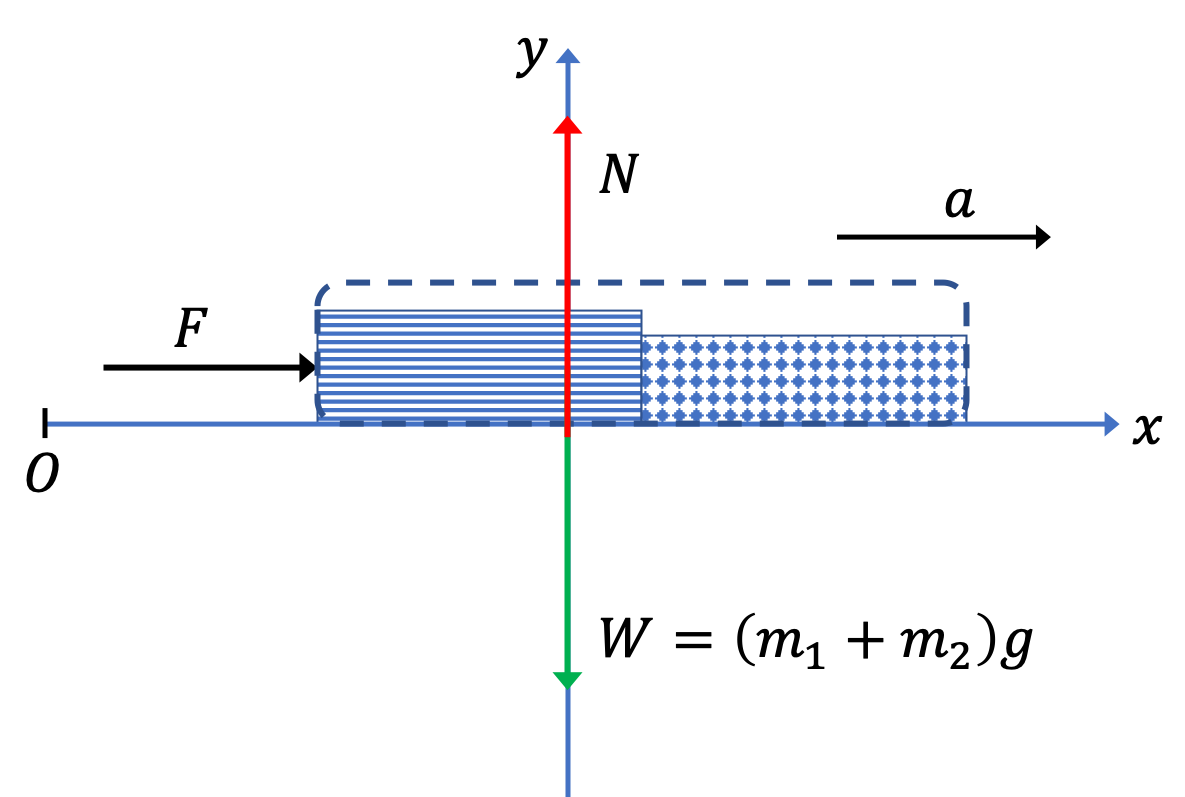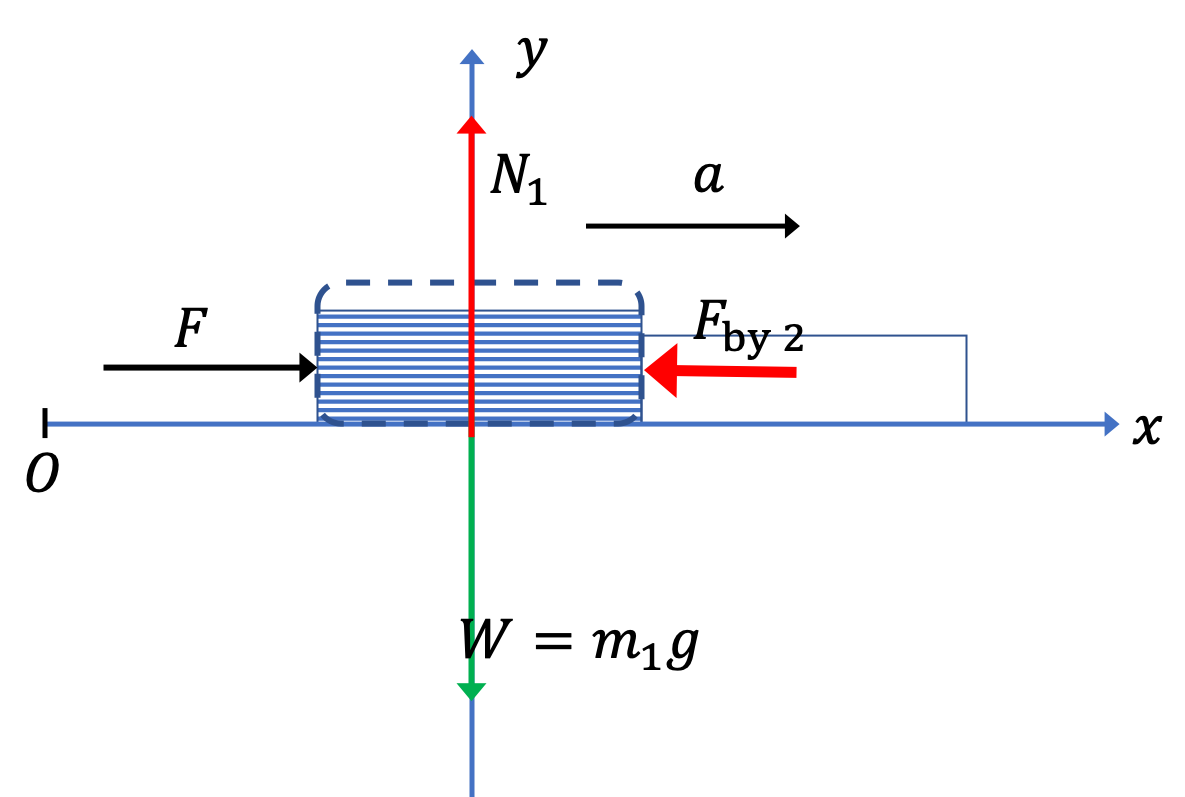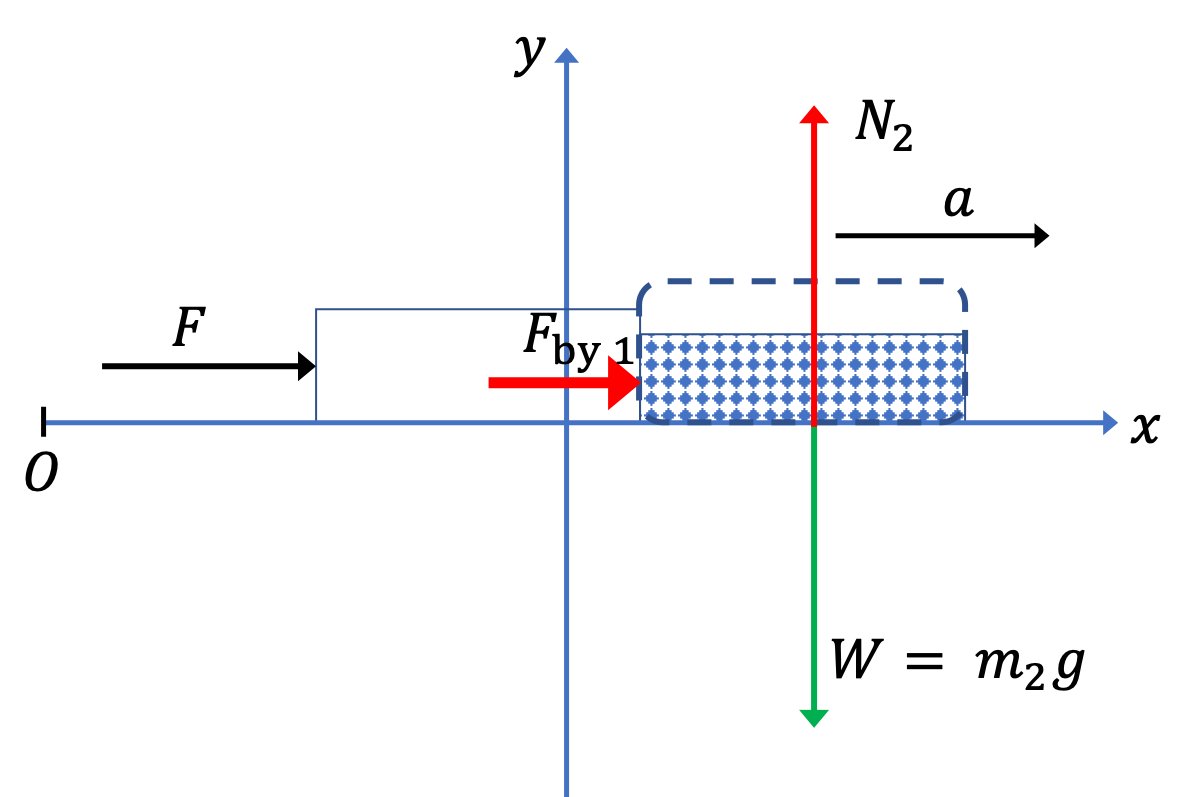Example 6.85. Force between Two Books Moving Together.
Consider two books of masses \(m_1\) and \(m_2\) that are next to each other on a frictionless table as shown in Figure 6.86. A constant force \(\vec F\) pushes on book 1 horizontally.
(a) What is the magnitude of the acceleration of the two books?
(b) What is the magnitude and direction of the force on book 1 by book 2?

Answer.
(a) \(\dfrac{F}{m_1 + m_2}\text{,}\) (b) magnitude = \(\dfrac{m_1}{m_1 + m_2}\, F\text{,}\) direction opposite to \(\vec F\text{.}\)
Solution 1. a
Since we want the acceleration of both, we can look at the two books together as one system and investigate forces on the combined system. The forces are shown in Figure 6.87 along with the choice of Cartesian axes.

Equations of motion along the two Cartesian axes are
\begin{align*}
\amp\text{ Along }x\text{ axis: } F = \left( m_1 + m_2 \right) a,\\
\amp\text{ Along }y\text{ axis: } N - \left( m_1 + m_2 \right) g = 0.
\end{align*}
From the first equation, we have our answer.
\begin{equation*}
a = \dfrac{F}{m_1 + m_2}.
\end{equation*}
Solution 2. b
Since we now want force on one of the books by the other book, we will need to set up force diagram of one book. Here, we want the force on book 1. So, it may seem “natural” to look at the force diagram of book 1, but it turns out it is easier to get this information from force diagram on 2 as we will show after I do the first way.
Using force diagram on 1:
Figure 6.88 gives the forces on book 1 alone. Note that we have a new force here, the (normal) force by book 2 on book1.

Now, the \(x \) axis equation of motion is
\begin{equation*}
F - F_{\text{by 2}}= m_1\, a,
\end{equation*}
where we can use the \(a \) we found in part (a) to give
\begin{equation*}
F_{\text{by 2}} = F - m_1\,\dfrac{F}{m_1 + m_2} = \dfrac{m_2}{m_1 + m_2}\, F.
\end{equation*}
Using force diagram on 2:
Figure 6.89 gives the forces on book 2 along with \(\vec F \text{,}\) which is here for illustrative purposes only. Note that force \(\vec F \) does not act on book 2 - its acting on book 1 or (combined book 1 and book 2, but not on book 2 alone) - since the person pushing book 1 is not in contact with book 2.

Now, the \(x \) axis equation of motion is
\begin{equation*}
F_{\text{by 1}}= m_2\, a,
\end{equation*}
where we can use the \(a \) we found in part (a) to give
\begin{equation*}
F_{\text{on 2}}^\text{by 1} = \dfrac{m_2}{m_1 + m_2}\, F.
\end{equation*}
But by third law, this is equal to \(F_{\text{on 1}}^\text{by 2}\text{.}\)




















